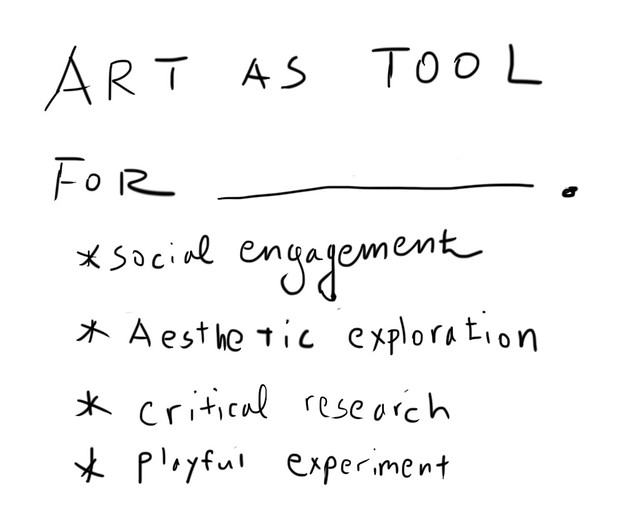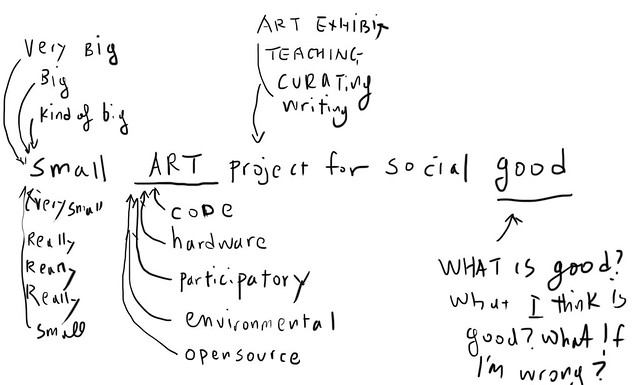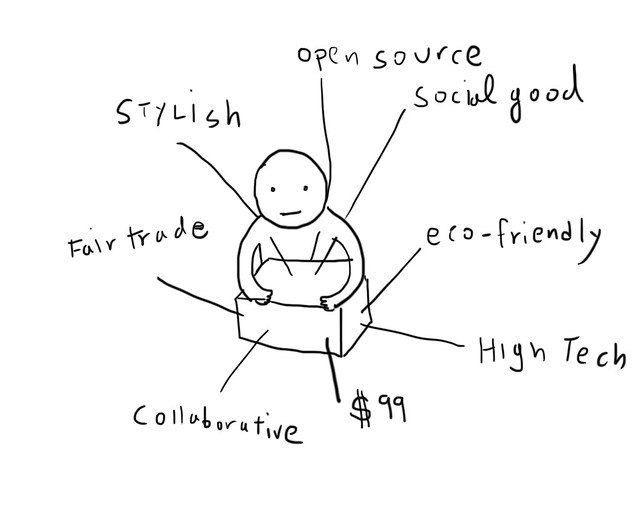Correct use of art

For a while I thought there needs to be a clear distinction between things I do as an artist and things I do to support myself. What I considered as art practice was traditional medium of drawing and writing, making objects (involving technology or not) and exhibiting and performing in gallery and art festivals. What I did to get by was through writing, researching, coordinating, teaching and curating. And there was the other kind of things I wanted to do that was neither art or job. Activism and social change is the closest term but it was not quiet similar to artist’s social practice or intervention. Realizing that the distinction between these things were rather arbitrary and self imposed, I questioned if I have inherited some concept of “The correct use of art” from art school experience a decade ago.

The simplification of thinking binary between art as something I want to do and everything else as something the world needs from me can be convenient. It got confusing once I started to question social value of art and job I was doing. After completing few projects, as achievements as well as oversights, I’m realizing that the two are not completely separate and maybe some combinations the two can lead to realizations of ideas that are seemingly impossible on its own.
Granted that the role of art does not need to be solely aesthetic or utilitarian, I am fascinated by projects that can be provocation and solution at the same time.

When art becomes tools, it can be used as a vehicle for social change, empowerment and criticism. The term ‘social good’ sounds naively positive, ‘social change’ shadows thinking of humanity as linear evolution, ‘social practice’ avoids real responsibility. It is a challenge to find a word that will represent shared interest of the artist as well as the participants (traditionally speaking, viewers) toward inventive use of art.

If taken out of careful contextualization, empowerment can sometimes be easily confused with entitlement. Art institutions can be mislead toward privileging the ones who are already privileged, or worsen the disparity and antagonism. Access to tools and space that are a momentary fix do not lead to sustained environment for creativity.

What kind of social missions can we achieve with art? other than applying social missions as trends or style.

The easy answer to initial question is simply, there is not correct use of art. It can be aesthetic, social or utilitarian, and one is not more correct than the other.
I think one good use of art can be when it is a tool for shared goal.
There are some other questions I would like to keep thinking as I proceed with new body of work. How can an artist make social change through an art project on their own? What are the ways for a small scale project with little budget to make meaningful impact? How can art spaces: museums, galleries and studios operate as a space to support social change?
6/18/2014 Brooklyn
References: